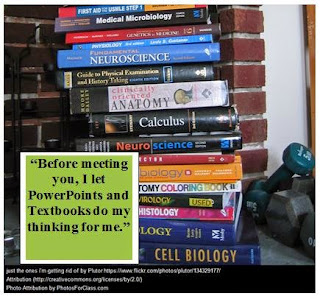For
several reasons, this is my last “From B106” memo. For one thing, my office will soon have a
number change and become F101F. This
palindrome has some intriguing possibilities, but of course, I will no longer
be in the office, regardless of its number.
In
fact, I’m not even sure if my new office has a number, and I am still trying to
figure out exactly what my new duties will entail and whether or not a weekly
memo will be part of the job description.
The unknown can certainly be a bit disconcerting.
It
doesn’t seem that long ago that I experienced a similar feeling. On August 19, 2012, I wrote my first email to
you as a staff. It was signed with my
name followed by “the new guy in B106.”
This is screen shot of the first two paragraphs:
It’s
hard to believe I wrote those words three years ago. Time really does fly when you’re having
fun. It’s also hard to believe that I
find myself in a similar situation now, wondering what will come and how to fit
in and how to make a contribution.
I
am confident that will sort itself out soon, but until then and as I said
before, the unknown is disconcerting. You
may feel this as well as several new administrators will be added to our
team. While you and I are making
transitions from the known to the unknown, I do want to stop for a moment and
let you know just how much I have enjoyed working with you all. You have taught me a great deal, and I have
confidence that we are moving forward in the right direction as a school and as
a district.
Thank
you for all you have done for me. Thank
you for all you have done for my children who attended Hamilton Southeastern. And thank you for all you have done and
continue to do for all of our students.
A
special thanks to Charlie, Kim, Tarek, Jim, Greg, Laura, Jagga, and Nancy for allowing
me be part of an outstanding administrative team. And Matt, there are no words
that can adequately express my gratitude to and admiration for you as an
administrator, as a father, and as a person.
You provide the rock solid foundation and leadership that will continue
to make Hamilton Southeastern High School a wonderful place for students and
teachers.
Every
ending is a new beginning. As educators,
we experience this regularly. This
year’s ending is a bit different for me, but I do look forward to continuing to
work with you toward our common goals.
It’s
a great day to be a Royal.
Phil
A
few quotes on beginnings and endings:
- “If you want a happy ending, that depends, of course, on where you stop the story.” --Orson Welles
- “There are some things you can’t share without ending up liking each other.” --J.K. Rowling
- “Life’s a movie. Write your own ending. Keep believing; keep pretending.” --Jim Henson
- “The beginning is always today.” --Mary Wollstonecraft










